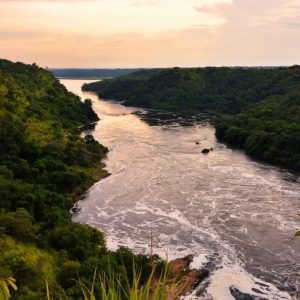The Stream, March 7: Horn of Africa Still Suffering Drought Effects
The Global Rundown
Funding shortfalls threaten to curtail humanitarian food and water deliveries in Ethiopia, putting millions of people at risk. Drought is also a driving factor behind violent ranch invasions in Kenya, according to government officials. A government report on Australia’s environment finds that water quality has improved in the Murray-Darling River Basin, but groundwater and inland waters near the coasts remain in jeopardy. The installed capacity of wind farms has overtaken that of hydropower dams in the United States. The Ivory Coast is set to open its newest hydropower dam next month, another step toward doubling its hydropower capacity by 2020. Low water levels in Lake Kinneret could spell shortages for northern Israel this summer.
“Each day without food assistance exponentially increases human suffering, lengthens the recovery period of affected people, puts increasing pressure on humanitarian and development systems, and the interventions become that much more expensive.” –Statement from the United Nations’ Office for the Coordination of Humanitarian Affairs on deteriorating conditions in Ethiopia, where 5.6 million people need food aid due to droughts. Water is also needed, with truck deliveries costing $2.7 million each week. But lack of funding threatens the humanitarian response, and a failure of spring rains could further exacerbate the crisis. (Reuters)
In context: Droughts across the Horn of Africa battered food security last year, and many countries are still struggling to recover.
By The Numbers
379 herders Number arrested in Kenya for invading private ranches and wildlife parks. Driven by drought, the herders are searching for water and pasture, according to Kenya’s domestic security minister, though ranchers claim it is for political reasons. Guardian
275 megawatts Capacity of the new Soubre hydropower dam on the Sassandra River, which will increase generating capability in the Ivory Coast by 10 percent when it comes online next month. The Ivory Coast plans to nearly double its hydropower production by 2020. Reuters
Science, Studies, And Reports
Australia released its State of the Environment report on Tuesday, citing climate change, land use change, habitat fragmentation and degradation, and invasive species as the top threats. The report noted restored environmental flows in the Murray-Darling River Basin as a success story for inland water quality, but also highlighted poor water quality along the coastlines. In addition, it found that most groundwater supplies are in poor condition. Australia State of the Environment
In context: Learn more about the contentious water buyback program in the Murray-Darling Basin.
For the first time, wind farms in the United States are capable of producing more electricity than hydropower dams, according to the U.S. Energy Information Administration. The total installed generating capacity from wind reached more than 81,000 megawatts by the end of 2016, while hydropower’s generating capacity weighed in just under 80,000 megawatts. Still, fluctuations in actual wind generation and a wet winter along the West Coast mean that hydropower will likely outperform wind this year. EIA
On The Radar
Water levels in Israel’s Lake Kinneret dropped 16 centimeters below the bottom “red line” as of March 1, raising concerns about water supplies for the country’s northern region as it enters the dry summer. The situation is “unusual” for this time of year, according to the Water Authority. The Jerusalem Post
A news correspondent for Circle of Blue based out of Hawaii. She writes The Stream, Circle of Blue’s daily digest of international water news trends. Her interests include food security, ecology and the Great Lakes.
Contact Codi Kozacek




